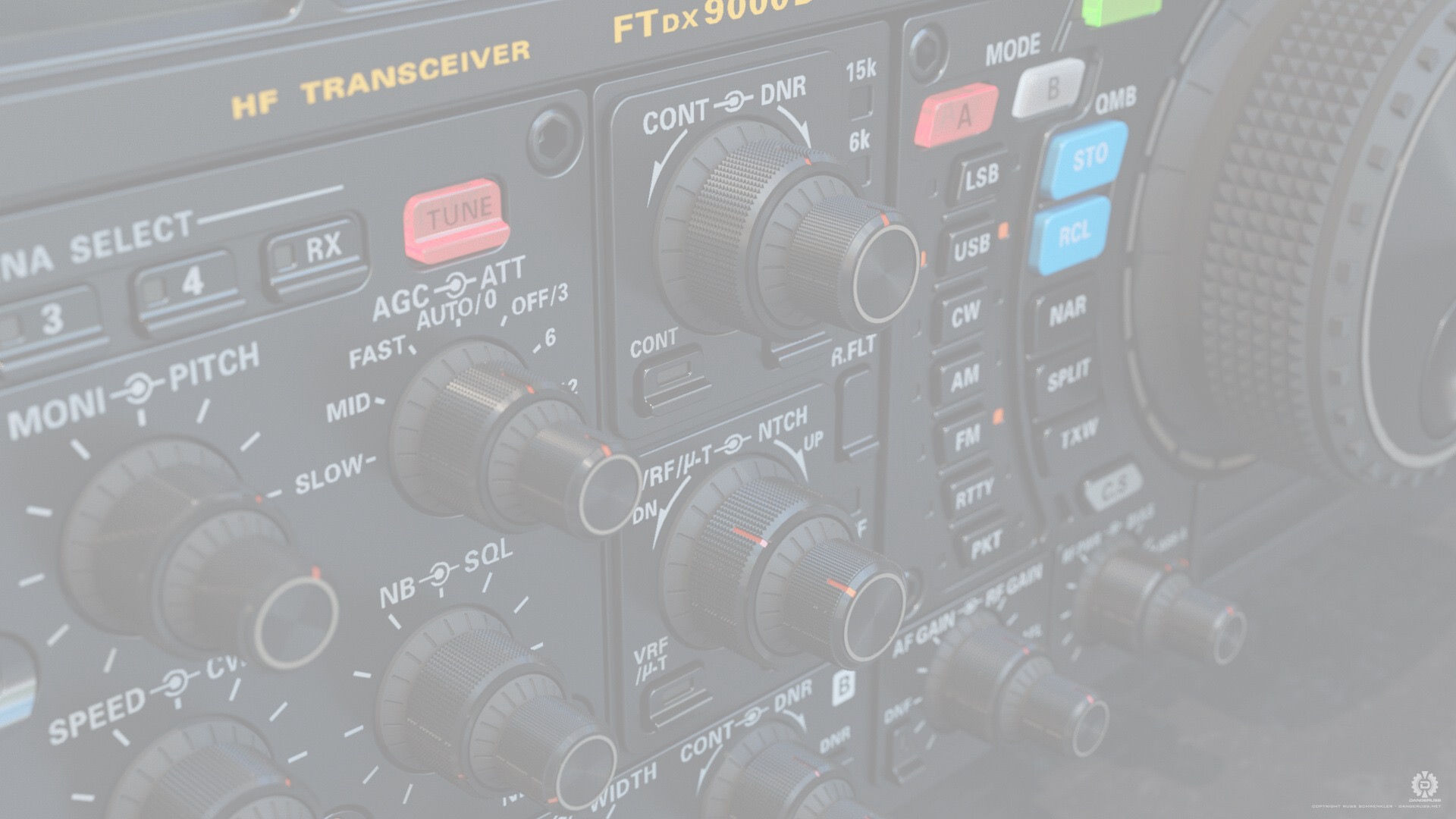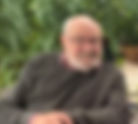
FAMPARC Search
312 results found with an empty search
- Ready for something excitingly exotic
DXing Welcome to meteor scatter. As the Earth moves along its orbital path, millions of particles known as meteoroids enter the Earth's atmosphere every day, a small fraction of which have properties useful for point-to-point communication. When these meteors begin to burn up, they create a glowing trail of ionized particles in the E layer of the atmosphere that can persist for up to several seconds. The ionization trails can be very dense and thus used to reflect radio waves. The frequencies that can be reflected by any particular ion trail are determined by the intensity of the ionization created by the meteor, often a function of the initial size of the particle, and are generally between 30MHz and 150MHz. The distance over which communications can be established is determined by the altitude at which the ionisation is created, the location over the surface of the Earth where the meteoroid is falling, the angle of entry into the atmosphere, and the relative locations of the stations attempting to establish communications. Because these ionization trails only exist for fractions of a second to as long as a few seconds, they create only brief windows of opportunity for communications. Here is a snapshot of my contact with Scott VK4CZ on 6m. You can clearly see three different pings over the receiving sequence of 15 seconds. The third ping is a loud, shot gun burst that generated multiple decodes. The two way contact could be completed within a couple of minutes or a bit longer, depending on the meteor shower. If you are already on 6m or 2m then you are ready for MS! Mode: MSK144 is a Minimum Shift Keying FSK signal used for amateur radio meteor-scatter contacts. It transmits 144 bit long packets at a Baud rate of 2000 bps using frequencies 1000 and 2000Hz. It is part of the WSJT-X suite. Where: on 6m band the watering hole for Australian stations is 50.230MHz. Skeds: random calling in morning hours is an option, however you will find more success by announcing your activity at http://www.VKspotter.com Note: VKspotter is not a 'casual' chat room. It is a place where dedicated chasers exchange time relevant information about openings, activities and scheduled skeds. Please join - but for a week or so simply observe until you get a feeling of what is appropriate and what is not. Of course, the group members are welcoming but they are not there to entertain you - or each other - but to watch the band for openings. Think of a business meeting atmosphere. If you join, you will learn a lot just by watching and listening. Meteor scatter is both visual and audio excitement. When a bounced signal is received, it creates a unique 'explosion' on the waterfall, accompanied with a equally unique sound. Once you decode your first MS signals, you will be hooked. See you on meteor scatter! Thanks to John VK3XM
- HEAR THE DIFFERENCE
In this video, I transmit at 5 different power levels, from 100 watts down to 1 watt. I record the audio from a station listening to my signal 250 miles away. You will be surprised how little audible difference can be heard when cutting your power! Thanks to Stanley VK3BOT for sending the video.. thanks mate well done ! CW Version SSB version
- VK3APC HAMFEST 2024
WHAT: MDRC Annual Hamfest WHERE: Kingston City Hall 979-985 Nepean Hwy, Moorabbin VIC 3189 Melways Ref: 77D4 Map: Click Here WHEN: Saturday the 11th of May 2024. The MDRC Annual Hamfest is held in May on a Saturday. The 2024 MDRC Hamfest will be held on Saturday the 11th of May. The MDRC Hamfest is widely renowned as the Biggest Hamfest in Victoria, with a huge turnout each year. Many attendees travel great distances to attend the MDRC Annual Hamfest from Interstate and overseas. In 2024 the MDRC Hamfest will be held at the Kingston City Hall 979-985 Nepean Hwy, Moorabbin VIC 3189. Ticket sales from 9.30am. Doors open at 10.00am 70 car spaces on site and more parking behind shops on Western side of Nepean Hwy. More Here
- invitation updated
On the 13th of May 2024 myself, Stan VK3BOT and Craig, VK3NCR propose a radio and camping trip to The Poplars Campground, Loch Valley Rd via Noojee. I am going on the Monday 13th May , returning home on the Saturday. Depending on Weather Conditions! WHEN: (updated new date) 13Th May for a Week Pending Weather WHERE: The Poplars Campground, Loch Valley Rd via Noojee (See Map Here) Click Here for more information on the camp ground. Club Members are invited to join us. The campground is accessible by two wheel drive and can be done on less than a tank of fuel. The campground has drop pit toilets. There is a river running around one side. There are loads of trees to hang antennas from. There is also a gazebo type structure to shelter in. I am taking two radios. I want to put in some learning time on my Icom IC-705 and play with antennas. So, if you would like to play radio, eat bad food, breath campfire smoke and generally have a relaxing good time, please do join us. Make it a day trip or stay as many days as you like. Regards, Stanley J. Mitchell Location Map PHONE RECEPTION: Telstra only and that’s patchy at best. 4G one bar dropping to 3G.
- DID YOU KNOW THIS?
World Amateur Radio Day Every April 18, radio amateurs worldwide take to the airwaves in celebration of World Amateur Radio Day. It was on this day in 1925 that the International Amateur Radio Union was formed in Paris. Amateur Radio experimenters were the first to discover that the short wave spectrum — far from being a wasteland — could support worldwide propagation. In the rush to use these shorter wavelengths, Amateur Radio was “in grave danger of being pushed aside,” the IARU’s history has noted. Amateur Radio pioneers met in Paris in 1925 and created the IARU to support Amateur Radio worldwide. Just two years later, at the International Radiotelegraph Conference, Amateur Radio gained the allocations still recognized today — 160, 80, 40, 20, and 10 meters. Since its founding, the IARU has worked tirelessly to defend and expand the frequency allocations for Amateur Radio. Thanks to the support of enlightened administrations in every part of the globe, radio amateurs are now able to experiment and communicate in frequency bands strategically located throughout the radio spectrum. From the 25 countries that formed the IARU in 1925, the IARU has grown to include 160 member-societies in three regions. IARU Region 1 includes Europe, Africa, the Middle East, and Northern Asia. Region 2 covers the Americas, and Region 3 is comprised of Australia, New Zealand, the Pacific island nations, and most of Asia. The International Telecommunication Union (ITU) has recognized the IARU as representing the interests of Amateur Radio. Today, Amateur Radio is more popular than ever, with more than 3,000,000 licensed operators! World Amateur Radio Day is the day when IARU Member-Societies can show our capabilities to the public and enjoy global friendship with other Amateurs worldwide. World Amateur Radio Day 2024 IARU is very pleased to announce the theme of: “A Century of Connections: Celebrating 100 years of Amateur Radio Innovation, Community, and Advocacy”. IARU celebrates its centenary in 2025. Since its founding in Paris, France, IARU has worked tirelessly to promote innovation in amateur radio and to encourage the growth of the service in communities throughout the world. IARU has represented the Amateur Services at international and regional regulatory bodies by relying on our volunteers who come from many countries and communities. IARU has been a sector member of the ITU since 1932 and the work of our volunteers has continued since that date with unmatched success, as was highlighted with the accomplishments at WRC-23. Leading up to our centenary year, we should take time to reflect on the remarkable achievements of radio amateurs over the last 100 years. While the Amateur Services have been in operation for over a century, 1924 was the first year that intercontinental amateur communication became more or less commonplace. Since that time radio amateurs have made unparalleled advances in technology related to the Amateur Services that play a critical role today in sustaining world-wide communications and allow us to respond to global emergencies. World Amateur Radio Day is an opportunity to reflect on our achievements since 1924. We should celebrate our diverse community and the advances and innovations we have made as we look forward to celebrating the IARU centenary next year. Material supplied by : https://www.iaru.org/on-the-air/world-amateur-radio-day/ And.. YouTubers.
- Calling our team from OC/SA/AF
The Islands On The Air program (IOTA) is an amateur radio activity program designed to encourage operations from island locations. It was created in 1964 by Geoff Watts who was a leading English short wave listener. It was taken on by the Radio Society of Great Britain (RSGB) in 1985. The team has agreed that if you are located in Oceania, South America, or Africa, we will accept your call at any time, regardless of which specific region we are calling. Dates of operation 14th April 2024 - 21st April 2024. Islands On The Air (IOTA) Flinders Island OC-261 World Wide Flora Fauna (WWFF) Investigator Important Bird Area VKFF-0175 For more information Click Here Thanks to Roy VK3GB for the information.
- WITH GREAT SADNESS
It is with great sadness that I announce the recent passing of Mrs Gloria Seabridge, loved and cherished wife of our club member Roy Seabridge. Gloria passed away peacefully on March 17th. This will come to all of us as a great shock, and our hearts and thoughts are with Roy at this time of grief. We wish Roy and the ones close to him the very best during this terrible time.
- For You!
Hello Members, Yep.. this is for you to download, Print & Display... As mentioned at our recent Monthly meeting, a way of getting new members to our club is to promote... We chatted about using a Club Flyer and attaching to your local Supermarket, Sports Hall, or any Community Poster Board in your area. I posted this one this morning at Hastings Pelican Park Recreation Centre. They were more than happy to allow me to place our flyer. This can be done at most if not all Supermarket's etc.. Below is a PDF for you to download, print and display.. Sample of the Flyer. For those of you that are not able to print this file.. Feel free to grab a few of these at the club. It's easy.. we all need to go to the Supermarket! Thanks !!! Craig vk3ncr
- important!
Hello Famparc Members, We have important topic that I wish to bring to the attention of our members. The Famparc membership subscriptions were due for the year 2024, as of Jan 1st 2024. We are now approaching the month of March as you are aware, so membership subs are well overdue. We have a total of 69 members on our books, and out of those members excluding lifetime members, we have 30 members that have not paid their 2024 membership subscriptions. Total Members 69 Members Non-Financial 30 We ask that if you wish to continue as a member of the club, if you could please arrange payment as soon as possible. For members wishing to retire their membership, please feel free to contact us via the email address below. Payment details: Pricing as of 1st Jan. 2024 Current subs are: Normal $50 Retired /Student /Pensioner $45 Family $55 Our bankers are NAB, Frankston BSB: 083-253 Acct No: 03-683-3688 MAKING PAYMENT: When making payment, please include your full name and callsign. You can email your payment details to vk3frcmail@gmail.com Your membership subscriptions are important to the club and its members. This allows the club to continue to grow and benefit all club members. You are one of them! LATE PAYMENT IN 2023: For those that are new to the club and paid their club membership mid to late 2023, there is no need to make payment for 2024, as your late 2023 payment will carry over for 2024. If you could please contact us if you made payment after June 2023. Thank you for your understanding and assistance. Kind regards, Craig vk3ncr
- REMARKABLE LEGACY OF BOB HEIL
Robert G. Heil (October 5, 1940 – February 28, 2024) was an American sound and radio engineer most well known for creating the template for modern rock sound systems. We celebrate the remarkable legacy of Bob Heil, a true pioneer in the ham radio community. As the founder of Heil Sound, Bob revolutionized audio technology, bringing unparalleled clarity and innovation to the airwaves. His passion for the hobby didn’t stop there; through the creation of Ham Nation, he fostered a global community of enthusiasts, sharing knowledge and inspiring countless individuals. Bob’s dedication and ingenuity have left an indelible mark on the world of ham radio, and we are profoundly grateful for his enduring contributions. On behalf of the FAMPARC Club and Amateur Radio operators around the world.. Thank you for your amazing dedication to our hobby. Reference Wikipedia.
- DON JOHNSON
Hi Members, Don Johnson Many of you may not know of this chap, as he only joined our club last year during the Mens Shed Dromana Day. However some of you will remember Don and his quick wit, engaging smile, and humour. Last year not long after he joined our club I was concerned why Don had not been coming to the club rooms, so I sent a few text to him, only to find out that hen was battling Stage 4 Bladder Cancer.. I must say that I was deeply saddened and shocked! I have been keeping in contact with him since his diagnosis back in October, I thought he was going ok, but earlier this year I noticed that he was not replying to my text messages.. Kate, his daughter contacted me last week, and we finally caught up on the phone last Saturday only to find out that Don had passed late January. Of course this was shocking news!... I then asked if the family would allow us to make note of him and his sudden passing on our website. Although our friendship was very brief, I was hoping he would battle through this terrible diagnoses and continue to enjoy our club and it's members.. Please take the time to think about Don and his family. Here are a few words from his family. (Kate) Hi all This is Don’s family here. You might have known that Don/Dad/Pop had been battling cancer for a few months. Unfortunately his condition deteriorated suddenly and he passed away peacefully at 1.20am on 29th January surrounded by his nearest and dearest. He leaves a lasting legacy of love, humour and strength. From Di, Drew and Nicola, Sarah and Stephen, Kate and Andrew, Cam and Kylie, and dad’s beloved 11 grandchildren and 2 great grand children. Rest in Peace Don.. Although a very brief friendship, you will be dearly missed. On behalf of the members of Famparc.. Craig vk3ncr
- New amateur radio arrangements have begun
If the above links do not work....












